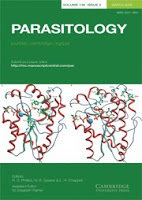 Authors: Taft AS, Vermeire JJ, Bernier J, Birkeland SR, Cipriano MJ, Papa AR, McArthur AG, Yoshino TP.
Authors: Taft AS, Vermeire JJ, Bernier J, Birkeland SR, Cipriano MJ, Papa AR, McArthur AG, Yoshino TP.
Parasitology 2009, 136(5): 469-485.
Infection of the snail, Biomphalaria glabrata, by the free-swimming miracidial stage of the human blood fluke, Schistosoma mansoni, and its subsequent development to the parasitic sporocyst stage is critical to establishment of viable infections and continued human transmission. We performed a genome-wide expression analysis of the S. mansoni miracidia and developing sporocyst using Long Serial Analysis of Gene Expression (LongSAGE). Five cDNA libraries were constructed from miracidia and in vitro cultured 6- and 20-day-old sporocysts maintained in sporocyst medium (SM) or in SM conditioned by previous cultivation with cells of the B. glabrata embryonic (Bge) cell line. We generated 21440 SAGE tags and mapped 13381 to the S. mansoni gene predictions (v4.0e) either by estimating theoretical 3′ UTR lengths or using existing 3′ EST sequence data. Overall, 432 transcripts were found to be differentially expressed amongst all 5 libraries. In total, 172 tags were differentially expressed between miracidia and 6-day conditioned sporocysts and 152 were differentially expressed between miracidia and 6-day unconditioned sporocysts. In addition, 53 and 45 tags, respectively, were differentially expressed in 6-day and 20-day cultured sporocysts, due to the effects of exposure to Bge cell-conditioned medium.

